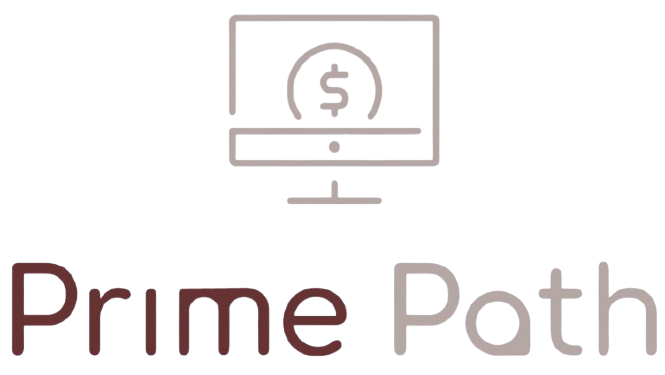Amazon is the world’s largest e-commerce marketplace, with over 310 million active users worldwide and 3.25 billion visitors in June 2024 alone. With such an immense customer base, without the right strategy, your products can get lost in a sea of competitors. That’s where PPC in amazon comes in.
As 79% of brands confirm PPC is the primary driver for their business, understanding how to get the most out of Amazon’s advertising platform is crucial for increasing visibility and maximizing sales.
What Is PPC in Amazon?
PPC in Amazon is a paid advertising model in which sellers bid on keywords to display their products in search results and product detail pages. When a shopper clicks on a sponsor ad, the seller is charged a fee, which is why it is called pay-per-click.
Amazon’s marketplace is highly saturated. With 45% of buyers stating they won’t bother scrolling the first page, sellers must find a way to stand out. PPC in Amazon provides this opportunity!
Why Is PPC in Amazon Important for Your Business?
Amazon continues to expand its advertising capabilities. In Q4 of 2024 alone, Amazon made $17.3 billion from its advertising services, an 18% year-over-year increase. This rapid growth signals that PPC will play an even bigger role in e-commerce success.
Higher Visibility
Amazon’s organic traffic surged from 2.4 billion in May 2022 to 3.25 billion in June 2024. Running PPC campaigns lets you tap into this massive audience. Through PPC in Amazon, your products will get the attention they deserve.
Immediate Sales Boost
Unlike organic SEO, which takes time, PPC in amazon provides instant results. With the right bidding strategy, you can immediately position your product in front of high-intent buyers.
Enhanced Brand Awareness
With Amazon generating $630 billion revenue in 2024, it’s a platform where visibility matters. Running a mix of sponsored products and display ass help establish your brand among shoppers.
Cost-effective Advertising
Unlike traditional ads, which require upfront payment, Amazon PPC ensures that you only pay when a shopper clicks on your ad. This makes it an efficient and cost-effective way to advertise.
Increased Return on Investment
Amazon PPC campaigns can yield impressive returns. With Amazon generating $56.2 billion in net ad sales in 2024, it’s clear that brands investing in PPC see substantial profits.
How Does PPC in Amazon Work?
Amazon’s PPC system operates on an auction-based model, where sellers bid on keywords. When a buyer searches for a product, Amazon determines which ads appear based on the bid amount and ad relevance.
Since sellers only pay when a customer clicks on their ad, PPC is a cost-effective way to get targeted traffic to their listings.
Choosing the Right PPC Ad Type
Amazon provides three main types of PPC ads, each designed for different marketing objectives. Did you know that 79% of Amazon SMB sellers use PPC advertising? It is clear that businesses, both big and small, rely on these ads to compete effectively.
Sponsored Products:
Sponsored products are most widely used and favored by 77% of Amazon sellers. These ads appear directly within search results and product pages, making them highly effective for individual product promotion.
Sponsored Brands
Sponsored brands are designed for brand awareness and are used by 39% of sellers. These ads appear at the top of search results and allow sellers to showcase multiple products along with a custom headline and brand logo.
Sponsored Display Ads
Sponsored display ads work differently from the other two formats. These ads target audiences based on their browsing behavior and can appear both on and off, including third-party websites. This type of ad is best for retargeting shoppers and is utilized by 30% of sellers.
Keyword Targeting
Simply running ads is not enough. You need a strategy for Amazon to ensure your ad spend translates into sales. The success of PPC in Amazon largely depends on keyword selection. Sellers can choose between manual and automatic targeting.
With manual targeting, sellers select specific keywords to bid on, allowing them to have greater control over their campaign. Automatic targeting, on the other hand, relies on Amazon’s algorithm to determine the best keywords based on the product listing.
To find high-converting keywords, use tools like Helium 10, Jungle Scout, competitor analysis, or Amazon’s own search term report.
Monitor and Adjust Bids.
The bidding process determines how much a seller is willing to pay per click. Start with Amazon’s suggested bid range and adjust based on performance. Overbidding can drain your budget, while underbidding can limit visibility.
However, it’s not just about bidding high. Amazon also factors in an ad’s relevance. If an ad has a strong history of generating clicks and conversation, Amazon is more likely to prioritize it over a higher bid with lower engagement.
Ad Auction and Placement
Every Time a buyer searches for a product, Amazon runs an auction in real time to decide which ads to display. The average click-through rate on Amazon advertising is 0.35%, meaning competition is high, and only the most optimized ads will get prime placement.
It is important to know that Amazon’s selection process considers three key factors:
- Bid Amount
- Relevance score
- Ad performance history
Track Key Metrics
Running PPC in Amazon without tracking key metrics is like driving blindfolded. You will waste money and miss out on sales. To optimize your campaigns, you need to analyze click-through rate, conversion rate, and advertising cost of sales regularly.
The average ACoS on Amazon is 30.55%, meaning profitability depends on balancing ad spending with revenue. Amazon generates 283,892 daily clicks and 27.49 conversions per advertiser, so monitoring these numbers helps fine-tune your strategy.
Additionally, with 82,323 daily impressions in 2024, even minor adjustments to bids and keywords can significantly impact visibility and conversations.
FAQs
What budget should I start with for PPC on Amazon?
There is no universal budget. The average seller spends around $277.97 per day on Amazon PPC.
Can I run PPC ads for out-of-stock products?
No, amazon automatically pauses ads for out-of-stock items. Plus, your money will not lead to sales.
Do negative keywords help in Amazon’s PPC?
Negative keywords prevent our ads from showing up for irrelevant searches, saving you dollars. For example, if you’re selling premium leather bags, adding “cheap” as a negative keyword ensures you don’t attract budget shoppers.
Conclusion
Navigating PPC in Amazon can seem challenging, but with the right strategies, you can effortlessly turn clicks into sales. A well-managed PPC campaign means more visibility, better conversions, and higher profits.
At Prime Path Amazon, we take the guesswork out of Amazon advertising. We handle everything from product sourcing and logistics to PPC optimization. Let’s chat and start optimizing your store today!






